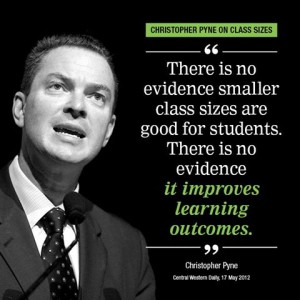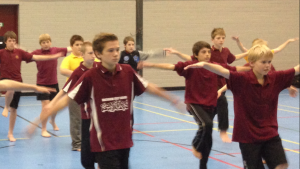Category: 1. Know students & how they learn, 2. Know the content & how to teach it, 6. Engage in professional learning, 7. Engage professionally with colleagues, parents/ carers and the community
Tags: @gcouros, @jkmcclung, @jlamshed, @wmchamberlain, AFL, CEGSA, film, George Couros, Haka, Jarrod Lamshed, Joe McClung, Kapa haka, learning journey, Louisa Guest, Movie making, PLN, Twitter
This week I had the privilege of attending the CEGSA Conference for 2012. We all know that conferences can be a bit hit and miss, and the expectations are particularly high if you are giving up your precious holiday time to attend. Thankfully, this one was a winner! I came away inspired into action on several fronts, one of which is to be more responsible for my own digital footprint (hence the new blog).
A major theme of this year’s conference was ‘connecting’. Guest speaker, George Couros (@gcouros) emphasised the importance of this in his keynote and this idea was evident through all of the workshops and sessions I went to. Students connecting with their learning and educators connecting with each other to share learning and to create better experiences for students. For me, this topic really hit home. As well as exposing me to a whole heap of new resources, ideas and contacts, the conference gave me a chance to reflect on my journey of connecting and how deeply that has changed the teaching and learning in my classroom.
The beginning
In 2009, after after a push from another teacher in our school (@louisaguest), I began working on our class blog. In the process of doing this I came across a class blog from New Zealand by Myles Webb (@NZWaikato). I made contact with Myles via email and was given a lot of guidance and critical feedback as I ventured through the murky waters of online learning for the first time. In one email conversation Myles recommended Twitter. My first reaction was that he was a lunatic! Twitter was that place where people cyber stalked celebrities, and what did I have to say that people would want to hear anyway? I gave it a go and at first I wasn’t convinced, but after following the tweets of several teachers recommended to me, I slowly began to see the light.
Early in my twitter journey I ‘discovered’ Bill Chamberlain (@wmchamberlain) and Joe McClung (@jkmcclung). Bill and Joe are educators in the USA and with Myles, were my earliest online collaborators. These early experiences were exciting for me and provided a new outlook on what teaching and learning could be.
My first online collaboration was with Bill Chamberlain. After scrolling through some tweets and blog posts, I noticed that Bill and I were using the same novel with our classes. We decided that each week we would alternate setting chapter response questions that each class would answer online on each other’s class blogs. Although this is a fairly ‘low level’ interaction, for me it was the first that came from establishing a PLN outside of the walls of my school. I gave me a realisation that there was more out there. After several of these types of collaborations the opportunity came up to do something completely different that took my students and I on a fantastic learning journey that continues to effect our school community today.
Something different
In 2009 I had a new student arrive in my class. This student was from New Zealand and was keen to share some of his Maori heritage with us. He began to teach our class (an all boys class) the Haka (Ka Mate). He got to a point where he had reached the limit of what he was able to teach us. The boys has connected deeply with the haka and we didn’t want to give it up. Finding someone to help us here in Adelaide proved difficult so we turned to Myles and his class in New Zealand. We decided to film one of our rehearsals and post it to our blog for feedback. Myles took this opportunity and his students created a video response for us and posted to their own blog. After a lot of exchanging videos, we finally got to a point where we were at a level ready to perform. Click play on the video below to watch the journey unfold.
Kapa Haka Journey from Jarrod Lamshed on Vimeo.
Being a part of this experience was amazing. Both students and teachers were able to harness the power of new technologies and create global connections. These connections allowed for learning to take place that never would have otherwise occurred. From this experience our class came to the attention of a local politician who gave us the opportunity to perform for, then, Premier of South Australia, Mike Rann and also the Governor General, Ms Quentin Bryce. We were recently asked again by the Premier to perform at an event for the 2011 Rugby World Cup. Now our school has adopted Kapa Haka as a regular part of our school wide arts program. Kapa Haka now involves over 100 students from across the school.
The next big thing
Around the same time, our class was collaborating with Joe McClung’s class in Missouri, USA. Joe asked me to Skype into their class and answer some questions about Australia. It was around 2am Adelaide time when I connected live into Joe’s class. At first all went well. I answered lots of questions about kangaroos and koala’s and then was asked to explain Aussie Rules Football. It wasn’t a question that I was expecting and due to the late hour (that’s my excuse and I’m sticking to it!) I messed up the answer completely. I showed the video of the skype conversation to my students the next day. They thought it was hilarious and gave me a well deserved hard time about it. They were’t happy that this was how their beloved sport was explained and this is where the learning began. This was the beginning of an experience that has changed EVERYTHING in our classroom.
From their Haka experiences with Myles’ class, the boys could see the value of using video for learning. They set to work to create a movie that explained Aussie Rules better than I did (not difficult). They wrote explanations and procedures for skills in the game and turned these into scripts and storyboards. After a lot of planning we walked to the local footy oval for a morning of filming. This is what they produced.
Footy – episode 1 from Jarrod Lamshed on Vimeo.
From then to now
After this experience the boys had the movie making bug. We entered into some movie competitions for school students and through hard work and lots of learning have been fairly successful (our latest movie below). Over the last three years the students have now won enough prize money that we have been able to self fund a class set of of 1:1 iPads! It’s been a a learning journey that never would have happened without delving into the worlds of online blogging and developing a PLN outside of the walls of our school. These opportunities have changed the face of not only our classroom but have effected the whole school community.
With the opportunity of 1:1 iPads in our class, students are now armed with the tools to take their learning to a new level. They have the tools to develop their own global PLN and collaborate with learners from anywhere in the world they like. I look forward to seeing where the journey takes us from here.






Recent Comments